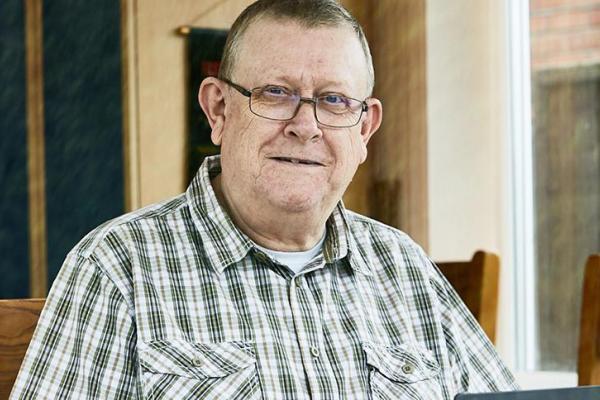Observed walk through in PLACE Assessment at Keech Hospice, Luton
Keech Hospice has been making improvements to ensure that staff and volunteers are dementia aware and that its environment is dementia-friendly. They did a walkthrough and observation combined with direct feedback to see how successful these changes were.
The Purpose
Keech Hospice is keen to do its best for people with dementia. For example, the Hospice is a member of Luton Dementia Action Alliance and many staff are Dementia Friends. Many service users, their friends and families may be living with dementia. The Hospice has been making improvements to ensure that staff and volunteers are dementia aware and that its environment is dementia-friendly. The observed walk through was to help the Hospice find out whether changes it has made are helpful, and what else it might improve.
Preparation
Each year Keech Hospice takes part in the PLACE survey (Patient-Led Assessment of the Care Environment). In 2018 they decided to use a patient assessor approach.
The Keech team invited a person with dementia ('Mr C'), his carer (his wife) and his 1:1 carer support to provide patient assessor insights by doing a walk through of the Hospice.
- staff decided which questions in the PLACE survey the walk through would help them to answer.
- staff identified specific places in the Hospice for which they felt it would be especially helpful to understand more about, seen through the eyes of a person with dementia.
What happened
The Lead for Dementia Lead met everyone at the entrance they were most familiar with.
The visit began with a sit down chat. This reminded everyone about the purpose of the visit and the questions from the PLACE assessment that they would be answering by doing the walk through. The staff made sure that there was a range of chairs people could choose to sit in, including chairs with arms - they knew from experience that people with more progressed dementia often need chairs with arms.
As the group walked around the Hospice, Mr C led the way so that his experience could be observed, as well as enabling him to choose what to comment on.
Areas of good practice were identified:
For example
- the receptionist and nursing staff were very welcoming and helped MrC to feel relaxed.
- the new door mat between the palliative care centre and its garden, replaced following the 2017 PLACE survey, worked well
- the toilet signs on the outside of each toilet door worked well. They are in particular colours, with an image and wording.
Areas for possible improvement were suggested, mostly low cost actions:
Observations included:
- a sign near some stairs asking people not to climb them was too small for Mr C to notice or to read. As a result he started to go up the stairs and staff had to stop him.
- CD Player and CDs for service users were too low down. Mr C wanted to look the CDs when he noticed them, but they were low down and, having knelt down, he could not get back up without help.
- In the restaurant, there were no chairs with arms, which made it very difficult for Mr C to sit down and stand up. He needed a lot of help and reassurance to do this.
- the speed of some automatic doors meant Mr C did not get through before the door started closing as, like many people with more progressed dementia, his walking speed is slower than many other people.
Direct feedback included:
- in a garden area people might be more able to relax and be less likely to walk aimlessly if bench seats and handrails were painted in contrasting colours to the greens and browns of the garden planting and ground, so that people can see them easily.
- People could use the facilities with more confidence, and less stress, if there were signs on the inside of each toilet door and showing the way to the exits such as reception. Currently the doors all looked the same, which could be confusing for some people.
- signs to say 'this is a dementia-friendly environment' to raise awareness of people in the Hospice that some people with dementia using the services might want to talk to everyone.
The Results
The results were encouraging. The changes highlighted in the observed walk through were mostly small actions that would not be expensive or time-consuming to address.
What changed for people with dementia
The walk through helped the Hospice to show that the experience of the environment is improving year on year for people with dementia. The changes suggested in 2018 are being addressed where possible.
Learning points
By including observation, the Hospice was able to get a much richer picture of the experience of the person with dementia than they would otherwise have gained from relying on the person completing a survey or note for them about their experience.
The sit down chat at the start of the visit helped to ensure the person with dementia was still consenting to be involved and confident about doing the activity, including being observed.
A lot of the recommended improvements would help not only people with dementia, but people with many other disabilities and conditions too.
Key contacts to find out more
Caroline Faulkner, Business Manager. Email: cfaulkner@keech.org.uk
Useful links
Patient-Led Assessment of the Care Environment - information and forms - NHS Digital




